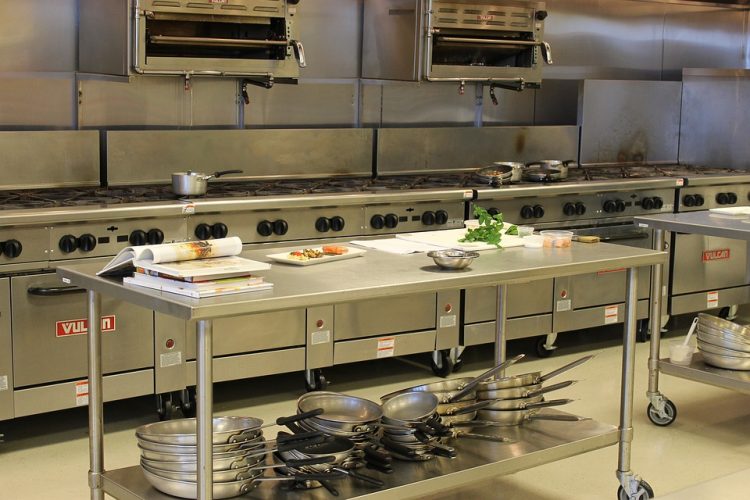In today’s competitive construction and foodservice industries, advanced planning and precise design are key to operational success. Whether you’re managing a fast-paced restaurant or building a storage hub, integrating intelligent Building Information Modeling (BIM) and structural engineering is critical. For businesses in New Jersey and Georgia, two growing specialties—Restaurant Kitchen BIM Services and Warehouse Structural Design—are transforming the way food and storage facilities are built and managed.
Restaurant Kitchen BIM Services in New Jersey
The culinary sector in New Jersey is thriving, with new restaurants constantly emerging. Behind every successful kitchen is a well-planned infrastructure, and that’s where Restaurant Kitchen BIM Services in New Jersey play a vital role.
What is Restaurant Kitchen BIM?
BIM (Building Information Modeling) provides a 3D digital representation of kitchen layouts, enabling designers, architects, and contractors to visualize space usage, utilities, equipment placement, and workflows. It minimizes costly errors, improves coordination, and speeds up the design-to-build process.
Benefits of BIM in Restaurant Kitchens:
• Optimized Space Utilization: Ideal for tight urban kitchens.
• Seamless MEP Integration: HVAC, plumbing, and electrical coordination.
• Efficient Workflow Planning: Visualize staff movement, reduce congestion.
• Compliance & Safety: Ensure all building codes and health regulations are met.
Why New Jersey Restaurants Need BIM:
With a dense population and strict zoning codes, restaurant owners in New Jersey benefit greatly from precision planning. From small eateries in Jersey City to larger chains in Newark, BIM helps accelerate permits, construction, and inspection processes.
Warehouse Structural Design in Georgia
Georgia’s strategic location and growing logistics industry have spurred the demand for modern storage solutions. From Atlanta to Savannah, businesses are investing in durable, scalable structures through professional Warehouse Structural Design in Georgia.
What is Warehouse Structural Design?
It involves engineering the framework and foundation of warehouse buildings to ensure they withstand environmental pressures, support heavy loads, and provide long-term durability. Structural engineers in Georgia tailor designs to suit both operational requirements and local building codes.
Key Elements of Warehouse Structural Design:
• Load-Bearing Calculations: For shelving systems, forklifts, and inventory.
• Foundation Engineering: Suitable for Georgia’s diverse soil conditions.
• Material Selection: Steel frames, concrete floors, and insulated panels.
• Energy Efficiency: Passive lighting, ventilation, and solar integration.
Georgia’s Advantage:
Georgia offers generous industrial space, making it ideal for large-scale warehouse development. With professional structural design services, companies benefit from faster builds, lower costs, and superior performance.
Why Combining Specialized BIM and Structural Design Matters
Modern businesses require integrated solutions. While BIM is revolutionizing how spaces like restaurant kitchens are visualized and built, structural design ensures that warehouses and commercial buildings stand the test of time.
Key advantages of combining both:
• Improved Collaboration: Between architects, MEP engineers, and builders.
• Reduced Costs: Early detection of clashes and inefficiencies.
• Faster Project Completion: Streamlined workflows and construction.
Frequently Asked Questions (FAQs)
1. What does Restaurant Kitchen BIM Services typically include?
It includes 3D modeling of kitchen layout, MEP coordination, space optimization, and code compliance visualization.
2. Are BIM services beneficial for small restaurant kitchens in New Jersey?
Absolutely. BIM is especially valuable for tight or complex spaces where every square foot matters.
3. How long does a typical warehouse structural design project take in Georgia?
It varies by project size, but generally 4–12 weeks for full structural planning and documentation.
4. Can warehouse design services include future expansion planning?
Yes, many structural engineers design with future scalability in mind to accommodate business growth.
5. Why is coordination between BIM and structural design teams important?
It prevents costly mistakes, ensures seamless integration of systems, and accelerates overall project timelines.
________________________________________
Conclusion
Whether you’re launching a new restaurant in New Jersey or building a warehouse in Georgia, using expert design services ensures a smoother, safer, and more efficient development process. At the forefront of these solutions is S3DA Design Firm, specializing in Restaurant Kitchen BIM Services in New Jersey and Warehouse Structural Design in Georgia. Their integrated approach to structural and MEP design guarantees smart, code-compliant, and future-ready infrastructure tailored to your business needs.
 :
https://s3da-design.com/
:
https://s3da-design.com/

